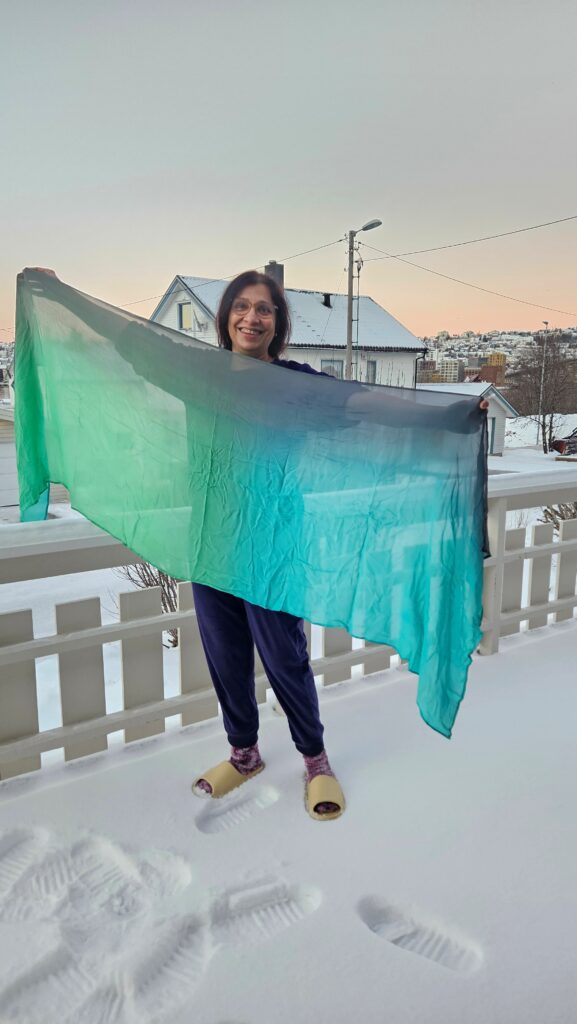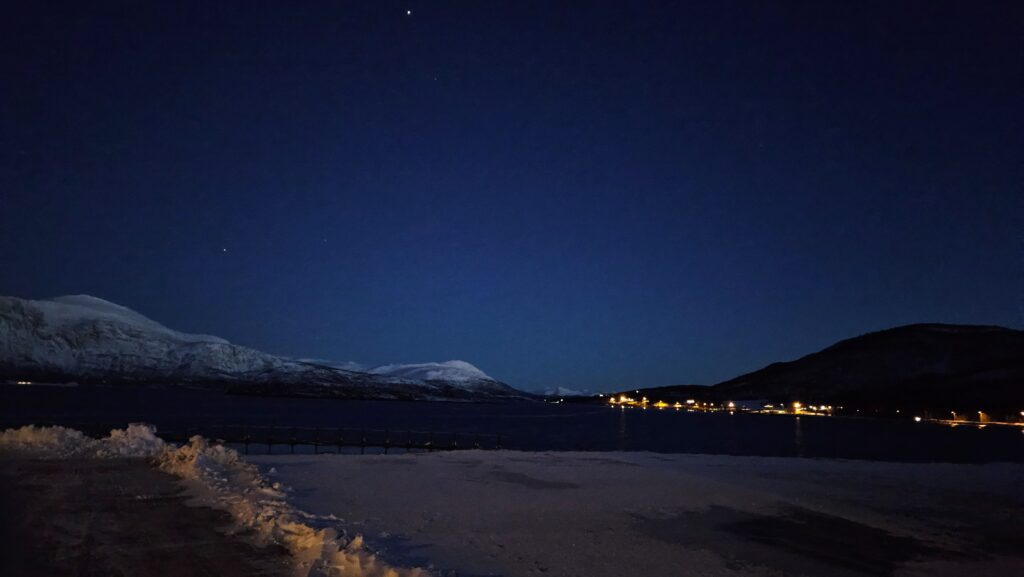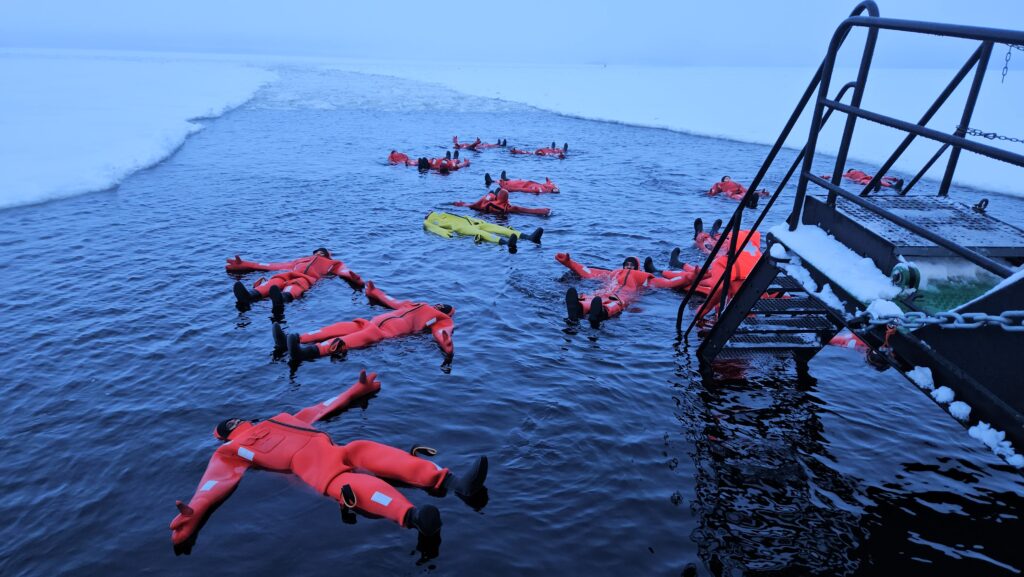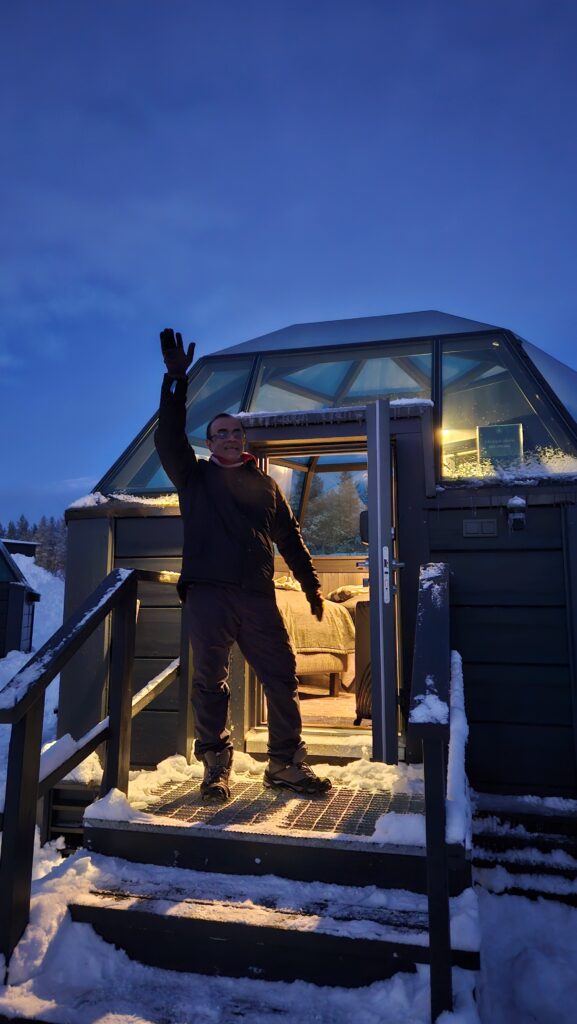My husband and I are passionate travellers who prefer to explore destinations on our own terms — not through the lens of tour operators or in large, impersonal groups. We seek out Airbnb stays, immerse ourselves in local neighborhoods, and take time to observe life as it naturally unfolds.
A decade ago, we journeyed through Iceland, Norway, Sweden, and Finland — but in the height of summer. That was when I first encountered the idea of the northern lights, beyond what I had learned in geography textbooks. Witnessing the aurora borealis, especially in the heart of winter at temperatures below -20°C, felt like a distant and perhaps unreachable dream at the time.
But the image stayed with us for a decade!!! With increased solar activity offering a rare window for spectacular displays, we finally set out to chase the Lady in the Sky.
We landed in Tromsø and began layering up immediately — preparing ourselves for the Arctic chill just to step outside and grab a cab. As we bundled up for what felt like a polar expedition, our smiling driver chuckled and said, “It’s good weather today!” — a true Arctic perspective, considering we were shivering before we even left the airport.

“Not just watching the lights- Wearing them”
Our cottage, tucked near the Arctic church, became our base for the night’s mission: catching a glimpse of the northern lights. With a mix of excitement and desperation, we followed every northern lights app and weather forecast, refreshing screens like anxious scientists. We settled on Fjellheisen as our viewing spot, and based on app predictions, timed our ascent with care. And then — as if on cue — the sky opened up. The Lady appeared, swirling and dancing in shades of green, as magical as we’d dreamed for the past ten years.

“The sky lit up… and so did my soul. I whispered the 15th Adhyay under the dancing lights.”
But Tromsø wasn’t just about the lights. The entire city was wrapped in a dramatic palette — brilliant white, inky black, and the deepest shade of Arctic blue I’ve ever seen. Even now, when I spot that precise hue on a color palette, I’m instantly transported back to Vikran Kai and Telegrafbukta, places etched in my memory not just for their beauty, but for the stillness they held

“Wrapped in stillness, en route to Vikran Kai holding my breath for the aurora.”
And here’s a fun fact I’ll never forget: Tromsø is home to the world’s northernmost McDonald’s. Somehow, grabbing a coffee at familiar fast-food chain felt perfectly surreal — a reminder of how the familiar and the extraordinary coexist in this remarkable corner of the world.

“When water forgets how to fall.”
Next, we traveled to Narvik a small town, aboard the Sviper double-decker bus — a beautiful journey through snow-covered landscapes, with front-row views. Incidentally, Narvik carries the weight of history. During World War II, its ice-free port made it a strategic hub for exporting iron ore — a critical resource for wartime industries. This led to intense battles between German and Allied forces, resulting in significant casualties. The impact of that conflict still echoes today; a war cemetery in Narvik stands in quiet remembrance of the soldiers who lost their lives on both sides.
In Narvik, we stayed at Camp 291, a stunning retreat of glass cabins nestled in the snow. The aurora forecast gave us just a 13% chance of seeing the lights, and I’ll admit, I felt disappointed. But as we stepped out into the cold night air, there she was — faint at first, almost teasing, and then slowly becoming clear and graceful above the trees. Thank you, dear Lady, for showing up when we least expected it.

“13% chance, 100% magic.”
We arrived in Abisko just after sunset and checked in at Abisko STF. According to the weather apps, the best chance to see the northern lights was around 9 p.m., so we layered up once more and made our way to the Arctic viewpoint.
The cold was biting, but what followed made every frozen step worth it. The entire sky was awash in a soft green glow, with luminous arcs flickering and shifting across the darkness. It felt as if the aurora had draped the heavens just for us.
As we stood in awe, we noticed another spectacle unfolding above — a planetary alignment, with a row of glowing celestial bodies stretched silently across the horizon. We couldn’t be sure which planets they were — and at that hour, there was no one around to guide us — but the effect was magical.
In that moment, it felt like the planets were the performers, the auroras the stage lights, the sky the stage, and we, the awe struck, lucky audience.

Our next stop was Kiruna, an inland town known for its rich iron ore reserves, which are transported by rail to Narvik’s ice-free port. The skies here were clear and crisp — ideal conditions for aurora watching.
By now, we had seen the northern lights several times, but it is the case of “no one can have just one” and our quest to see more was undeniable. So, just before sitting down to dinner, we stepped outside to check the skies. Nothing. The night seemed quiet, and we reluctantly returned indoors to eat.
Then came the call.
My son-in-law, who had been tracking solar activity from New Jersey, phoned us in excitement: “Drop everything and go outside — now!” We didn’t hesitate. Plates with bhel, were left behind as we rushed out into the night.
And there she was.
The Lady in the Sky returned in full glory — dancing across the well-lit streets of Kiruna, casting her shimmering green trails overhead. It was breathtaking. Even with the city lights, the auroras were vivid and majestic — a reminder that no matter how many times we had seen them, the awe never faded.

Our next destination was Rovaniemi — famously known as the official hometown of Santa Claus. We traveled there by taxi, and our driver turned out to be quite the character: a Swedish businessman who owned mines in Kiruna. The journey was anything but dull — he spoke passionately about geopolitics, his country’s policies, his future ambitions, and, to our delight, his love for ABBA. There’s nothing quite like listening to ABBA while driving through snowy Swedish roads in the land where it all began.
When we arrived in Rovaniemi, it was cloudy and snowing heavily — a perfect postcard of Arctic winter. Our villa was stunning, complete with a sauna and a hot tub outdoors. The hot tub experience was particularly surreal: it was -20°C, snow swirling around us, steam rising from the water, and the moisture in our hair freezing into icicles — yet we were incredibly comfortable and relaxed.

The next morning, we headed to Kemi for the much-anticipated icebreaker cruise on the Gulf of Bothnia. Interestingly, despite being farther south than parts of Norway, this section of the sea freezes solid, as it lacks the warming influence of the Gulf Stream that Norway benefits from.
The cruise aboard the Arktis was unforgettable. The ship carved its way through thick sheets of ice, sometimes several feet deep, with a thunderous crack and a slow lurch that you could feel in your bones. At a designated stop, we stepped off the ship to walk on the frozen sea — an experience that felt otherworldly.
Then came the most surreal part: we donned survival suits and floated in the icy waters of a section cleared by the ship. Despite the freezing temperatures, the suits kept us warm and buoyant. Floating in the frozen Gulf of Bothnia, under an open sky, surrounded by nothing but ice — it’s an experience that will remain etched in my memory forever.

“Not your average swim—frozen waters, survival suits, and the frozen Gulf of Bothnia”
The final chapter of our northern lights journey took us to the Arctic Snow Hotel and Glass Igloos, just outside Rovaniemi — the perfect setting for a grand finale.

So long Farewell, we hate to say Good Bye!!!
The property offers two unique experiences: the Ice Hotel, where everything — from beds and tables to chairs and walls — is sculpted from ice, a frozen work of art. And the Glass Igloos — warm, modern domes with panoramic ceilings and tilting beds, built for comfortable aurora watching.
We chose to stay in a glass igloo, enjoying the warmth and comfort while admiring the sky through the transparent dome. During the day, we explored the Ice Hotel and marveled at its icy craftsmanship. That evening, the solar activity was strong, and we waited with anticipation for the lights to appear.
But low clouds rolled in, and the aurora wasn’t visible.
Instead of disappointment, we found ourselves chatting late into the night, wrapped in stories and shared memories. And in that quiet moment, we were reminded that nature has its own rhythm, and that God always has His own plans. Sometimes, accepting those plans with grace brings a different kind of peace — one not seen in the sky, but felt in the heart.
While the Northern Lights often take center stage, the Scandinavian landscape offers a quieter, more subdued kind of beauty. For those of us from the tropics—accustomed to vibrant greens, oranges, and yellows, and the constant warmth of bright sunlight—these lands feel otherworldly. The scenery unfolds in stark tones of black, white, grey, and deep blue, colors our eyes rarely see. And then there’s the weather—harsh and unforgiving, not just for visitors, but even for those who call this place home. It’s a challenge to endure, but also something that, perhaps, should be experienced at least once in a lifetime.









